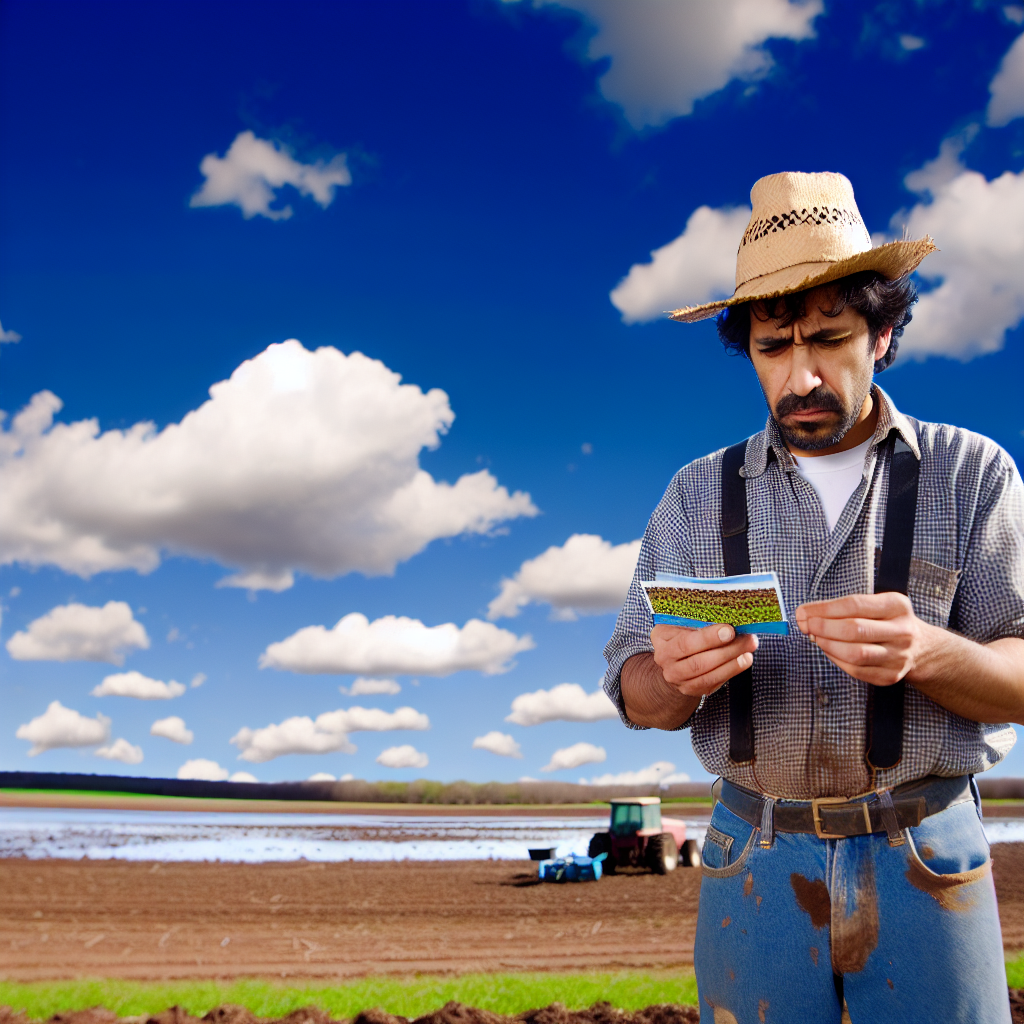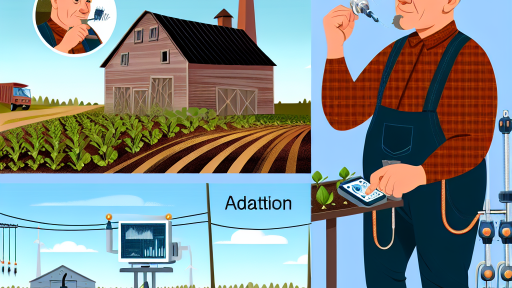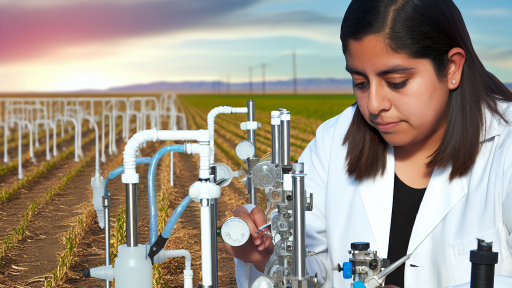Understanding Flood Resistance
Definitions of Flood Resistance
Flood resistance refers to a plant’s ability to survive and thrive in waterlogged conditions.
This adaptability is essential for farms located in flood-prone areas.
Crops with flood resistance can withstand prolonged submersion.
In contrast, non-resistant varieties may suffer severe damage or death.
Importance of Flood Resistance
Flood resistance is crucial for ensuring crop yields during extreme weather events.
Climate change increases the frequency and intensity of flooding.
By choosing resilient varieties, farmers can safeguard their livelihoods.
This choice also supports food security in vulnerable communities.
Characteristics of Flood-Resistant Varieties
Flood-resistant crops possess unique traits that enhance their survival.
- Rapid growth initiation once floodwaters recede.
- Adaptation to anaerobic conditions in root systems.
- Development of specialized aerenchyma tissues.
Moreover, these crops can often resume normal physiological functions quicker.
As a result, they can better compete for resources post-flooding.
Selecting Appropriate Varieties
Farmers should evaluate different crop options carefully.
Selecting flood-resistant varieties can significantly mitigate risks.
Local agricultural research stations provide valuable recommendations.
- Rice varieties like Swarna Sub-1 excel in flooded conditions.
- Certain soybean cultivars show improved flood tolerance.
- Some native crops also demonstrate exceptional resilience.
Researching and testing various options will facilitate informed decisions.
Transform Your Agribusiness
Unlock your farm's potential with expert advice tailored to your needs. Get actionable steps that drive real results.
Get StartedCase Studies of Successful Implementations
Several farmers have successfully adopted flood-resistant crops.
For instance, Nguyen’s farm in southern Vietnam increased yields significantly.
Utilizing flood-tolerant rice helped him withstand seasonal floods.
Similarly, Ramirez’s soybean fields thrived after heavy rains in Brazil.
These successes highlight the importance of strategic crop selection.
Types of Crop Varieties: Drought-Resistant vs. Flood-Resistant
Understanding Drought-Resistant Varieties
Drought-resistant crops thrive in low-water environments.
They conserve moisture and utilize soil water efficiently.
This enables them to survive periods of drought.
Farmers can expect higher yields under dry conditions.
Exploring Flood-Resistant Varieties
Flood-resistant crops can endure waterlogged conditions.
They possess adaptations that help them survive excessive water.
These varieties minimize damage from heavy rainfall and floods.
Farmers benefit from reduced crop loss in wet seasons.
Comparative Advantages
Drought-resistant varieties are ideal for arid regions.
Conversely, flood-resistant crops suit regions prone to heavy flooding.
Each type addresses specific environmental challenges faced by farmers.
Choosing the right variety can maximize agricultural output.
Factors Influencing Variety Selection
Understanding your local climate is crucial.
Soil type and drainage characteristics also play a role.
Consider crop rotation practices in your farm management.
Consulting with agricultural specialists can provide valuable insights.
Top Flood-Resistant Crop Varieties for Specific Regions
Flood-Resistant Varieties for the Southeast
The Southeast encounters significant flooding due to heavy rainfall.
Consider planting rice varieties like ‘Catahoula’ and ‘Cypress.’
These adapt well to wet conditions and produce high yields.
Showcase Your Farming Business
Publish your professional farming services profile on our blog for a one-time fee of $200 and reach a dedicated audience of farmers and agribusiness owners.
Publish Your ProfileIn addition, sweet potatoes offer resilience during flooding.
They thrive in saturated soils while also being a popular crop.
Flood-Resistant Varieties for the Midwest
The Midwest is prone to spring floods.
Planting varieties like ‘Maverick’ corn can mitigate losses.
This corn is known for its drought tolerance and flooding resistance.
Moreover, choose soybean varieties such as ‘Asgrow AG36X6.’
This soybean exhibits good tolerance to waterlogged conditions.
Flood-Resistant Varieties for the Northeast
Northeast farmers should also consider flooding impacts.
Barley varieties like ‘Conlon’ are ideal for wetter climates.
They maintain good yields even with excess moisture.
Additionally, ‘Early Girl’ tomatoes can withstand short-term flooding events.
They are a favorite for home gardens and markets alike.
Flood-Resistant Varieties for the West
In the West, certain crops can adapt to occasional flooding.
Look for wheat varieties such as ‘Soft Red Winter Wheat.’
This variety establishes quickly and survives brief inundation.
Also, consider flood-tolerant varieties of quinoa.
Quinoa thrives in various soil moisture levels and is gaining popularity.
Storage and Preparation Tips
After harvesting flood-resistant crops, proper storage is vital.
Avoid excess moisture during storage to prevent spoilage.
Ensure good ventilation in storage areas to keep crops dry.
Regularly inspect crops for signs of mold or pests.
Learn More: Building Resilient Farms Amid Climate Uncertainty
Assessing Soil Type and Drainage in Relation to Crop Choice
Importance of Soil Type
Soi type significantly influences crop growth and yield.
Identifying your soil type helps in making informed planting decisions.
Different crops thrive in specific soil conditions.
For instance, sandy soils promote drainage but may require more water retention measures.
Clay soils, on the other hand, retain water but can create drainage issues.
Understanding your soil type leads to better crop choices and improved harvests.
Evaluating Soil Drainage
Soi drainage affects how water moves through the soil layer.
Well-drained soils prevent waterlogging, promoting healthy root systems.
Check for drainage characteristics by examining soil texture and structure.
Field tests can also reveal how quickly water drains in your soil.
Managing drainage helps enhance crop resilience against flooding.
Choosing Flood-Resistant Varieties
Flood-resistant crops can thrive in wetter conditions.
Research local farm trials to find recommended varieties.
Consult with agronomists to identify suitable flood-resistant crops.
Always consider your specific soil type when selecting seeds.
Advancements in plant breeding have led to better flood-tolerant options.
Making Informed Decisions
Assessing both soil type and drainage is crucial before planting.
Incorporate findings from soil tests into your crop planning.
Showcase Your Farming Business
Publish your professional farming services profile on our blog for a one-time fee of $200 and reach a dedicated audience of farmers and agribusiness owners.
Publish Your ProfileUtilize existing resources and experts for accurate information.
Stay updated on new crop varieties that meet environmental challenges.
Adopting these practices promotes sustainable farming amid changing climates.
Find Out More: Assessing the Financial Impacts of Climate Variability on Farms
Impact of Climate Change on Flood Patterns and Crop Selection
Changing Flood Patterns
Climate change significantly alters flood patterns around the globe.
Increased rainfall frequency contributes to more severe flooding events.
Moreover, changing weather patterns lead to unpredictable flooding seasons.
This unpredictability creates challenges for farmers in crop selection.
Understanding Crop Vulnerability
Not all crops react the same way to flooding conditions.
Flood-sensitive crops may suffer yield losses quickly during inundation.
Additionally, prolonged exposure to water can lead to root rot.
Farmers need to assess the vulnerability of their current varieties.
Choosing Flood-Resistant Varieties
Selecting flood-resistant crop varieties can minimize risks.
These varieties thrive in wet conditions and recover more swiftly.
For instance, rice and certain legumes exhibit flood resilience.
Farmers should research and invest in these beneficial varieties.
Climate-Adapted Crop Research
Research institutions are developing new crop varieties specifically for flood resilience.
For example, the International Rice Research Institute focuses on flood-tolerant rice.
Here, scientific advancements drive improvements in crop adaptation strategies.
Cultivating these varieties can secure food sources amid climate changes.
Utilizing Local Knowledge
Local farmers’ knowledge plays a crucial role in crop selection.
Indigenous techniques often highlight flood-resistant varieties historically used.
Collaboration between farmers and agricultural extension officers enriches this knowledge base.
Utilizing local insights can guide effective adaptation strategies.
You Might Also Like: Precision Agriculture Tools for Better Water Management

Best Practices for Testing Crop Flood Resistance on Your Farm
Understanding Crop Flood Resistance
Flood resistance refers to a crop’s ability to withstand excess water.
This characteristic is crucial in areas prone to heavy rain or flooding.
Selecting the right varieties can significantly reduce crop loss.
Initial Variety Selection
Start by researching crop varieties known for their flood resistance.
Consult local agricultural extensions for region-specific recommendations.
Consider varieties with genetic traits that enhance adaptability.
Gather data on yields and resilience during past flooding events.
Field Testing Methodology
Implement field trials to assess the performance of chosen varieties.
Use small plots to compare flood-resistant crops against standard varieties.
Ensure trials are set up under controlled conditions for accuracy.
Observational Techniques
Regularly monitor crop performance during wet conditions.
Record plant height, leaf health, and overall vigor.
Use photographs to document growth stages and flood impacts.
Data Analysis and Evaluation
Analyze collected data to identify successful varieties.
Compare yield differences between flood-resistant and traditional crops.
Showcase Your Farming Business
Publish your professional farming services profile on our blog for a one-time fee of $200 and reach a dedicated audience of farmers and agribusiness owners.
Publish Your ProfileUtilize statistical tools for clearer insights into performance metrics.
Incorporating Soil and Water Management
Implement best practices in soil management to support crop health.
Consider drainage solutions to minimize water accumulation.
Regular soil testing can provide insight into nutrient availability.
Feedback and Continuous Improvement
Engage with fellow farmers for shared experiences and insights.
Attend workshops on flood management and crop selection.
Continuously update practices based on new research and findings.
Learn More: Sustainable Farming Techniques for Unpredictable Weather
Farm Management Strategies: Integrating Flood-Resistant Crops
Importance of Crop Selection
Choosing the right crop varieties is essential for farm resilience.
Flood-resistant crops withstand excess water during heavy rainfall.
They reduce the risk of crop loss and ensure food security.
Farmers can maintain productivity despite challenging weather conditions.
Assessing Soil and Water Conditions
First, evaluate your farm’s soil drainage and water retention capabilities.
Understanding these features will guide your selection.
Test the soil for its ability to absorb water efficiently.
Identifying how much water your crops can tolerate is crucial.
Researching Crop Varieties
Next, conduct research on available flood-resistant crop varieties.
Many agricultural universities and extension services provide valuable resources.
Look for crops such as flood-tolerant rice or certain soybean varieties.
Consulting local agricultural experts can provide tailored recommendations.
Implementing Crop Rotation Strategies
Integrate rotation strategies to improve soil health and resilience.
Rotate between flood-resistant and conventional crops to enhance soil structure.
This method prevents the buildup of pests and diseases.
Additionally, it allows for more effective use of nutrients.
Utilizing Cover Crops
Cover crops can greatly enhance farm resilience against flooding.
They protect the soil and improve its structure before main crops are planted.
Legumes, for example, enrich the soil by fixing nitrogen.
Furthermore, cover crops reduce soil erosion during heavy rains.
Monitoring Weather Patterns
Stay informed about weather patterns for effective farm management.
Utilize meteorological services to anticipate heavy rainfall events.
This information helps in making timely decisions about planting and harvesting.
Incorporating technology for weather alerts can add further reliability.
Engaging with Farmer Networks
Connect with other farmers to share experiences and strategies.
Collaborative efforts can lead to shared knowledge about flood resilience.
Engaging in local farming networks fosters community support.
It may also provide access to innovative practices and resources.
Case Studies: Successful Implementation of Flood-Resistant Varieties
Overview of Successful Case Studies
Farmers around the world successfully implement flood-resistant crop varieties.
This section explores notable examples of their achievements.
Case Study: The Thompson Family Farm
The Thompson Family Farm in Louisiana faced frequent flooding.
In response, they adopted flood-resistant rice varieties.
Showcase Your Farming Business
Publish your professional farming services profile on our blog for a one-time fee of $200 and reach a dedicated audience of farmers and agribusiness owners.
Publish Your ProfileAs a result, their yields increased significantly.
Moreover, these varieties survived waterlogged conditions better than traditional types.
Key Actions Taken
- The family attended workshops on flood-resistant cultivation.
- They collaborated with local agricultural extensions for guidance.
- They planted varieties specifically bred for high water tolerance.
Results Achieved
Post-implementation, the Thompsons reported a 40% yield increase.
Furthermore, their cost of production reduced due to fewer crop failures.
This approach enabled them to sustain income during flood seasons.
Case Study: Green Valley Co-op
In North Carolina, Green Valley Co-op embraced new technologies.
They focused on a variety of flood-resistant sweet potatoes.
This change reduced the risk associated with heavy rainfall.
Implementation Strategies
- Members participated in training sessions on crop rotation.
- They implemented soil management techniques to improve drainage.
- They shared resources and insights among co-op members.
Impact on the Community
The co-op increased local food availability significantly.
In addition, sustainability efforts expanded as members adopted flood-resistant practices.
The initiative fostered community resilience against climate challenges.
Examining Global Examples
International efforts showcase the importance of flood-resistant crops.
In Bangladesh, farmers developed rice hybrids capable of surviving floods.
These varieties thrive even when submerged for weeks.
Global Innovations
- Governments funded research on flood-resistant genetics.
- Seed banks provided access to these new crop varieties.
- Farmers received education on implementing these innovations.
Positive Outcomes
Farmers in Bangladesh reported increased food security.
Additionally, agricultural productivity improved across flood-prone regions.
This success story highlights the potential of strategic crop selection.
Additional Resources
A scoping review of adoption of climate-resilient crops by small …
Water Conservation in Agriculture – Nevada Irrigation District




